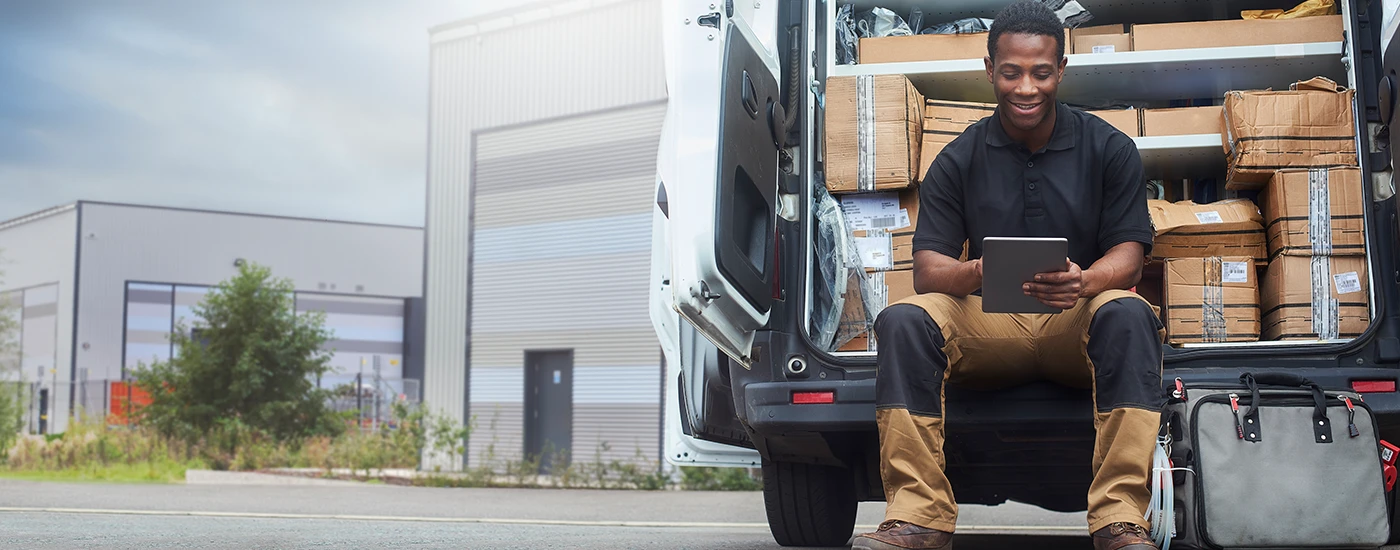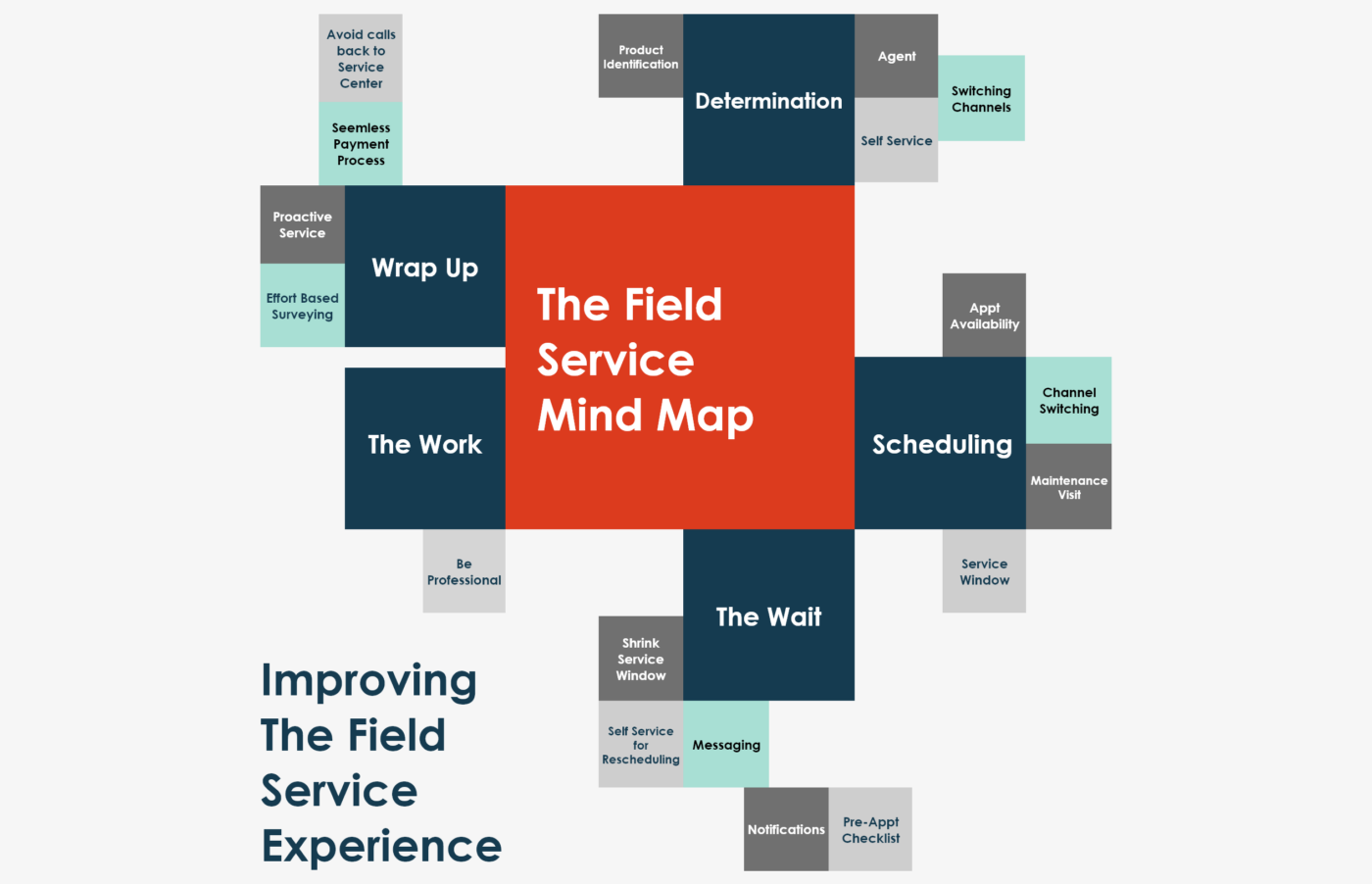Effortless Field Service Doesn’t Stop in the Call Center: Part 1

Co-Founder & Managing Director – SSC & DS, Harry Radenberg discusses key phases of effortless field service
Your customer service experience doesn’t end after your appointment is scheduled.

This article was originally written in March 2021.
I’m an avid reader, but I mostly read science fiction, fantasy, and weird fiction (though during the pandemic, I broadened into more standard fiction). For me, reading is the way I shut off my brain from work and exercise it in a unique way. Due to this, I’m not a big reader of business methodology/transformation stuff – which I realize is a little ironic considering my field. I read these types of books, but they need to change how I look at challenges and make me rethink my approaches.
Not a lot of them do that, but one exception is The Effortless Experience: Conquering the New Battleground for Customer Loyalty by Matt Dixon, Nick Toman, and Rick DeLisi (just to be super clear, I have zero affiliation with them – I wish I did – but this is all unsolicited and uncompensated praise). If you are in the customer service space and you haven’t read this book, you honestly need to go pick up a copy – and grab your highlighter (or if you’re on the Kindle, get the highlight function ready) because you’re going to be taking a lot of notes. It is a terrific book that challenges many traditional thoughts around customer service and backs them up with many stats. The research of this book tackled was beyond impressive, and the authors do a terrific job mining these statistics for some impactful discoveries and recommendations.
This post isn’t explicitly about the book, it’s more my take on extending the findings a bit, but I need to give a little background of what those findings are for things to make sense. The book’s overarching theme is that reducing their effort is the best way to make your customers happy. It’s not about wowing them or going beyond with customer service but rather solving that customer’s problem with as little effort as possible.
On the surface, when you take a step back and look at what customer service organizations do and how they train their agents, they are inadvertently (and sometimes purposefully) adding effort to the customer. Nevertheless, it’s a fascinating read, and it goes in multiple ways to reduce the added effort. So how does this apply to Field Service?
How does this apply to Field Service?
I thought about this after someone posted within the Field Service United LinkedIn group and mentioned Effortless Experience. While the book focuses on the call center and self-help side of customer service, Field Service is an extension. Think about all the work you could have put into making your call center experience effortless – reducing channel switching, and getting customers to the right agent/channel on the first try. In addition, enable your agents to make the experience more effortless for your customer indeed. In the end, the result is that an onsite visit is required.
It could be for an installation, an upgrade, or even a repair but it involves rolling a truck and getting a technician onsite for your customer. How quickly could that vast experience unravels if your field service experience is loaded with effort? Worse is all the positives you gained as a part of the agent and self-service side will be forgotten, and all that will be remembered is the negative field service experience. So, at the end of the day – if you’re a believer in effortless expertise (or you’re just starting to read the book and are getting blown away by the concepts) and your service experience includes a field aspect – you’re going to need to extend that effortless philosophy into the field.
5 Key Phases to Successful Field Service
Let’s dive into how to make this happen. Obviously, I do not have the stats that Matt Dixon and the team have at their disposal, but I’ll leverage many of the concepts they advocate for within the book. For example, if you have a field part to your customer service experience, there are five “phases” to a field experience your customer goes through. We’ll look at each phase and break down ways you can make them more effortless for your customers.
- Determination: The period where a customer is figuring out their problem and determining if a field visit requires to resolve their issue.
- Scheduling: The process of scheduling the visit once it’s been determined is required.
- The Wait: Until we invent teleportation (I have some of my best people on this, and they need to do better), there is a window between when that visit gets scheduled and when someone rolls up to a customer’s door.
- The Work: The work that is needed itself and everything that is involved with it.
- Wrap-Up: The work has been completed, and now the technician has their wrap-up process.
How can you reduce friction or effort for your customers at each phase of the process?
In this post, we’ll hit the first two phases and then go through the rest in Part 2.
Determination
The determination phase has the most overlap with your traditional customer service. I won’t re-hash the book and all the things that can be done with the call center or that your agents can do with handling customer interaction (there’s a lot – but read the book); instead, I’ll focus on the parts that impact field service. The most significant factor is whether you need to dispatch someone to the customer or can you resolve the issue with your agents. Matt Dixon and team comprehensively cover the concept that channel switching leads to higher effort for your customer. So, a customer who must go to your website and then call your call center has switched channels once. I’ll go on a small limb here and say that an in-person dispatch is another form of channel switching; in these covid days, that might even be more so. I do think certain situations won’t be as bad. For example, if your customer’s kid just threw a ball through their window, and they are explicitly calling to get a technician out there to replace that windowpane – the impact of that channel switch will be low.
The customer is self-aware, which is essential – however, the effect should stay within zero in these cases. It’s still an effort to deal with this. However, there are situations where a customer hopes this resolves without someone coming to their house. Their internet is down, for example. They have gone to your site, looked for an outage in the area, then hit your self-help tools trying to reset the router themselves, and now they are calling your agent and going through multiple attempts, all with no luck. When you hit them with the news that you need to get someone to their home to look at it – that’s a channel switch with a lot of perceived effort wrapped around it.
While it’s impossible to avoid all dispatches, customer service teams need to be thinking about ways they can eliminate these to reduce that effort. The biggest tool here is allowing your agents to see what the customer looks at. In that internet example above, the customer needs to be tech savvy and have trouble understanding the cables or indicator lights the agent is talking about. Sometimes the problem is simply identifying what product the customer is talking about. Think about your home – do you know exactly what model your windows are? Your garage opener? Your boiler? Half the time, we’re lucky if we can figure out the brand, let alone the model. Now, what chance does your agent have on a phone call? This is where pictures and video are worth 1,000 words – or maybe at least a truck roll deflection.
Everyone has a mobile phone these days – take advantage of that and have your customers share what they are looking at. At a bare minimum, have a way that your customers can take pictures and send them to your agent. The super simple approach here – have an SMS-enabled customer service number that they can send photos to and have the customer type in the Case number. With very little work, you can have those images automatically associated with that Case and visible to the agents while they are still on the phone. Another great option is camera sharing. Give your agents an app that allows them to see through your customer’s cameras. Agents can tell the customer where to point it and even take screenshots while they are watching – this is a perfect way to guide a customer through a process. A few AppExchange products integrate directly with Service Cloud for this. We wrote about Glance’s Camera Sharing app a few months after covid shut everything down. A few months after, Salesforce also released its Visual Remote Assistant product.
Overall, the goal of this step should be providing your agents or self-help with any tools possible to avoid sending a technician onsite. At the same time, as I mentioned – some problems need someone onsite to solve them. Make it easy for your customer to figure this out for those types of issues. Only create self-help articles that give the impression that the customer can solve this independently when it’s simple enough. A big part of the effortless experience is telling your customer the right channel to solve their problem. If that right channel is a technician visit – make that clear and get them to the scheduling phase. Making it difficult for your customers in advance and then hitting them with the need for an onsite visit will make things worse – and is the opposite of making it effortless for them.
Scheduling
The scheduling process can have a few factors that can drive extra perceived effort for your customers. First and foremost, do your customers need to switch channels to schedule a visit? If you have a service that you’re not trying to deflect a truck roll as we mentioned above – like propane delivery or routine maintenance visits – you’ll want to ensure your customers can schedule visits on their own versus making them call or reach out to schedule. For other service types – you need to balance the odds of deflecting the field visit with the ease of booking. What’s a more significant effort for the customer? Having to call in and speak to an agent who manages to solve their problem on the phone or giving a customer a self-service ability to schedule an onsite visit for something that didn’t need a visit? The product/services you offer and your odds of avoiding a visit determine the balance.
If you need clarification here – surveying your customers is critical – and include effort-related questions about the field visit. Find out what they think the effort is. One other considerable effort note here – if your customers are speaking to an agent as part of the determination process. Then, you need to ensure your agents are empowered to schedule the visit if required. Don’t introduce a negative effort by forcing your customers to transfer to a dispatch team that controls the schedule. If you need to do this due to the lack of a scheduling system, talk to Salesforce about Field Service. If you have a system like Field Service and your process still forces this, you’re honestly doing something wrong.
Outside of how to schedule a visit, a considerable effort factor is also around the availability of resources to schedule. If your internet is down and you can’t get a technician to the customer for a week – that’s a massive inconvenience to your customer, and no matter how successful your agent and technicians were with their pieces, that week of being down is going to be the negative that is remembered. Your schedule priorities and how you apply your weight are significant. Do you need more availability because you’re trying to optimize cost savings too much and refusing to allow a technician that’s a bit longer distance to take a Work Order? If so, you’re hurting your customer loyalty by saving a few dollars, which in the long run, will be more costly. Another idea here is to tie your work types.
Not all work types are equal, and they shouldn’t all be scheduled as the same. Using the internet example, work types where a customer is down should have schedule priority over an upgrade, for example. This doesn’t mean you keep re-scheduling upgrade work already scheduled (spoiler alert – re-schedules = effort). Instead, ensure you only allow a certain number of lower-priority work types to be expected per day or week. Salesforce Field Service has this capability and ensures you always have some slots available for higher priority work types – even if they come at the last minute. If you have your next week of work already at capacity and it’s all lower priority work types when that emergency work order comes in. You will make it worse by having to schedule it even further out (or, in some cases, increase your costs by doing it off hours, etc.).
A big part of reducing a customer’s perceived effort is proactively avoiding future issues – or effort. While scheduling, you have a significant opportunity to facilitate future efforts by seeing if future work can be done simultaneously with this visit. For example, “I see you have an annual maintenance visit in 45 days – why don’t we knock that out for you while we’re there?” Music to a customer’s ears – you reduce their effort by preventing a future visit. On the flip side, is there anything more aggravating when you have someone over for service and then, like a week later, you get the notice for the next regularly scheduled visit? Your first thought is, “Why didn’t you just do that while you were here!” Now that the effort perception of a regular visit has gone through the room.
Summing Up
Finally, let’s talk about the dreaded service window. It’s safe to have the rule that the larger the timeframe you provide for your scheduling window, the more effort you put into your customer. Telling your customer – even with two weeks’ notice – that their appointment can be at any time on a given day prevents your customer from scheduling other things that day, which is a hassle and an effort. The tighter you can keep that window up front, the less burden you put on your customer.
Some businesses can’t get to a specific time too far in advance because the actual route of all the work orders that day plays into it. Deliveries are a great example of this. If you can’t give a specific time to your customer at the time of scheduling, you will want to get them a particular time as soon as possible. The longer the customer needs to wait for that specific arrival time, the more likely you will be perceived as a great effort to them. We’ll discuss in more detail how to do this in “The Wait” next.
That’s it for Part 1 of Effortless Field Service. In Part 2, we’ll review The Wait, The Work itself, and what we can do in the Wrap-up and beyond to reduce your customer’s overall effort. The Effortless Service findings apply just as easily to Field Service from the above. I think this gets even more credible when we get into the following phases in Part 2 – especially with The Wait phase. In the meantime, please reach out and let us know what you think. We’d love the dialogue!
– Harry Radenberg, Co-Founder & Managing Director – SSC & DS
